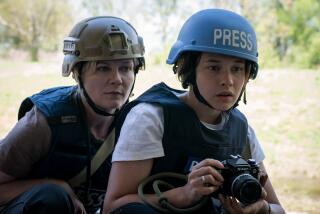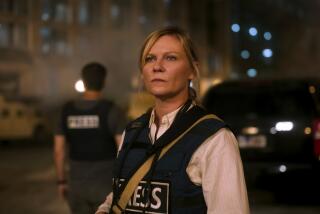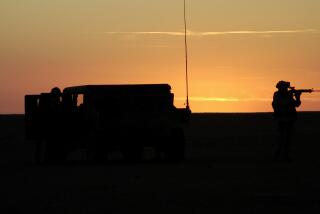Documentarian slips into everyday Iraqi life
- Share via
Among his other failings, Saddam Hussein was not a supporter of documentary films.
So when James Longley, fresh from his well-received documentary about the Gaza Strip, went to Iraq in 2002 to capture the sweeping social and political change that he was sure would soon occur, he found bureaucratic doors shut tight.
As the U.S. prepared to launch its assault in early 2003, an expired visa forced Longley to leave Baghdad for his home in Seattle without much to show.
But when Hussein was toppled, everything changed. It was a filmmaker’s dream: a complex, nuanced society in the throes of fundamental change and no government to get in the way.
“You didn’t have to ask anybody’s permission,” Longley said in an interview during his visit this week to Los Angeles. “As a filmmaker, it was a huge gift.” Over the next 18 months, Longley shot what would become “Iraq in Fragments.”
The documentary is divided into three parts. The first section follows an 11-year-old boy apprenticed to a wise but often cruel car mechanic in Baghdad; the second deals with the followers of Muqtada Sadr in Nasiriya and Najaf; and the third deals with the Kurds.
To get close to the Shiite clerics and members of the then-nascent militia, Longley had to overcome suspicion. Questions -- some joking, some serious -- about whether he was working for the CIA were common.
“My approach was simply to be very patient, to be as respectful as possible, to never push them further than they wanted to go,” he said. He concedes being shocked at the violence unleashed by young members of the Al Mahdi army. His camera follows them as they trash a marketplace and assault their countrymen like street toughs.
“One day you’d be sitting with them drinking coffee, like average Joes, and the next day or hour you see them go out and shoot up a market and beat up people,” he said.
Working with only a translator, Longley felt a tightening of attitudes in April 2004 as the Abu Ghraib scandal broke, American contractors were killed in Fallouja, and U.S. Marines launched an assault on insurgent strongholds in that Sunni Triangle city.
“You could feel the ice starting to firm,” he said.
Working with the Kurds in the mountainous section near the Turkish border was easier. Largely friendly to the U.S., the Kurds enjoyed a kind of quasi-autonomy because the U.S.-imposed “no-fly zone” grounded Iraq’s air force and kept them safe from attack.
“I enjoyed living in the north. You don’t have to look over your shoulder all the time.” Two subjects he followed for months -- a woman seeking help for a son with AIDS and a woman seeking shelter from an abusive husband -- were left out of the movie. The material just didn’t seem to fit the theme, he said.
The downside, he said, is that the first two segments of “Fragments” are virtually all male. “There are so few women’s voices, I miss that.” To rectify that, he has made one of the excised segments into its own short work, “Sari’s Mother.”
Longley, 34, studied film at the University of Rochester, Wesleyan University and the All-Russian Institute of Cinematography in Moscow. His student documentary, “Portrait of Boy With Dog,” about a boy in a Moscow orphanage, won a student award in 1994 from the Academy of Motion Picture Arts and Sciences.
His next project is about another country in the throes of conflict with America and the West: Iran. He does not anticipate the kind of stonewalling that greeted him in Hussein’s Iraq, in part because Iran has its own film industry.
Although “Iraq in Fragments” has been acclaimed at film festivals whose politics are clearly left-of-center -- it was a hit at Michael Moore’s festival last summer in Traverse City, Mich. -- Longley says his film has no political intent.
That numerous Iraqis in the Baghdad street scenes and the Shiite rallies let loose with virulent anti-American views does not mean he agrees with those views, Longley said.
“I hope people see that the reality of Iraq is not just about geopolitics or abstract philosophies but real people -- and that decisions we make have an influence on those people, for good or ill.”
More to Read
Sign up for Essential California
The most important California stories and recommendations in your inbox every morning.
You may occasionally receive promotional content from the Los Angeles Times.










